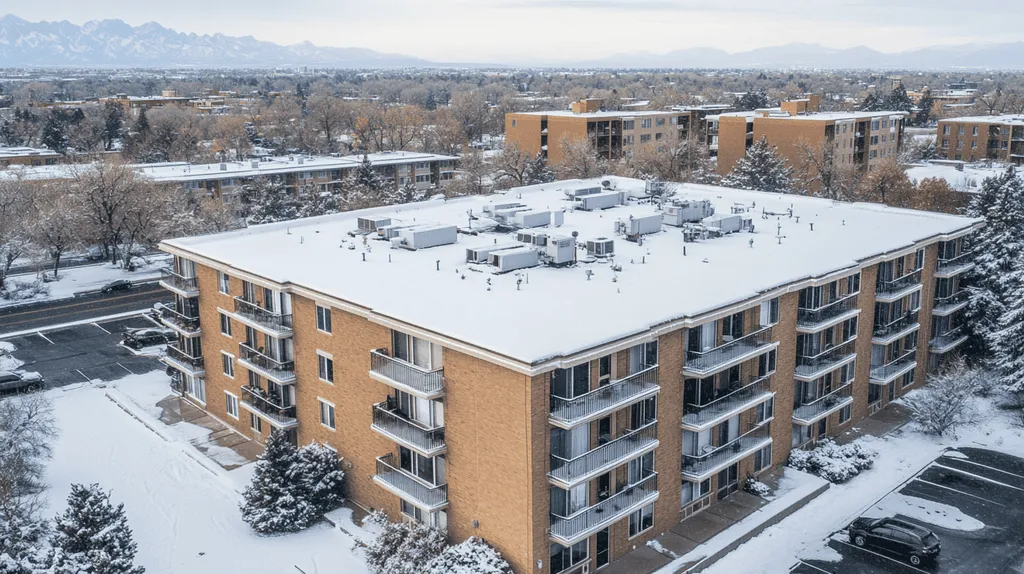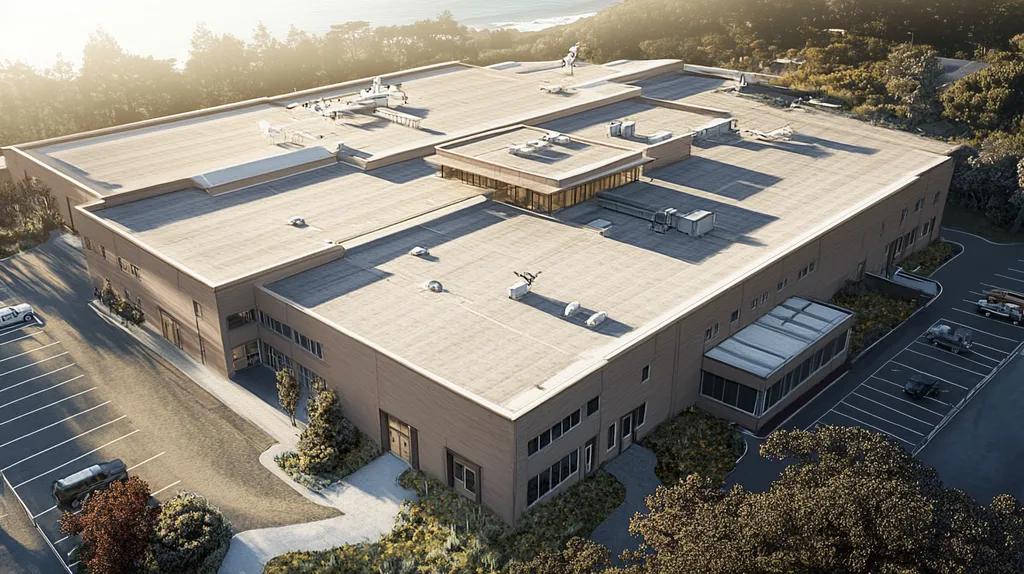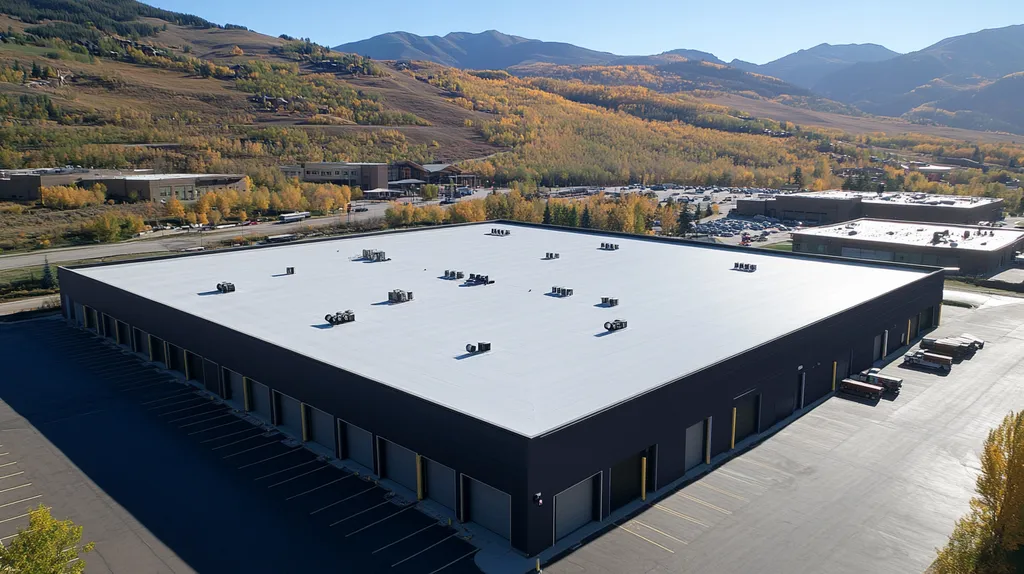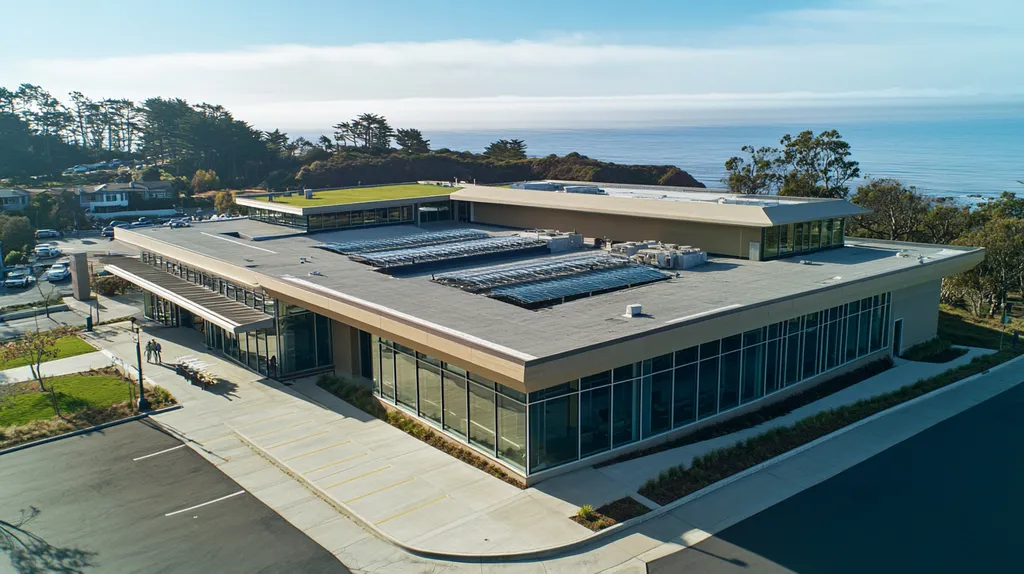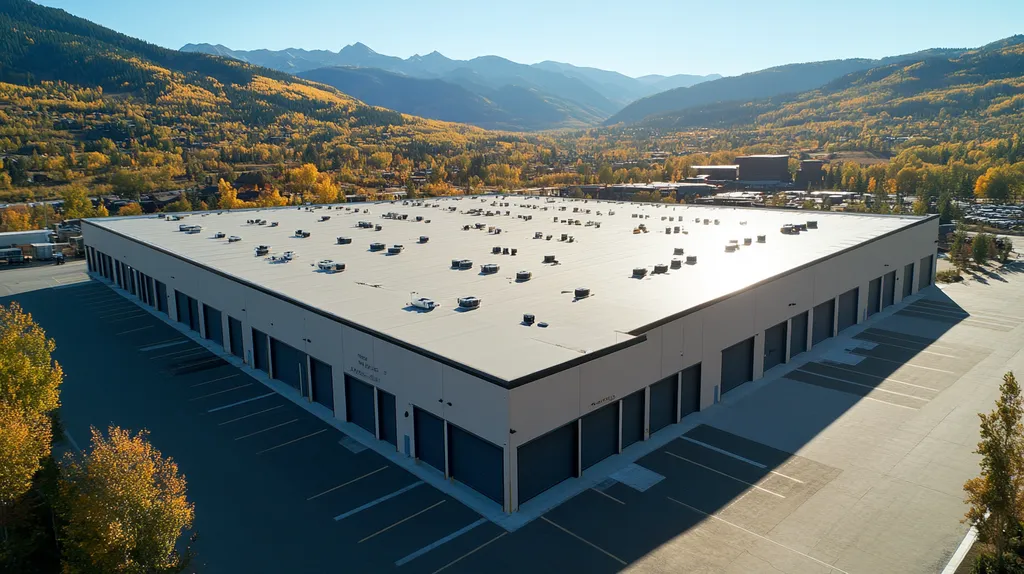Fire-resistance ratings form the foundation of commercial roof safety, yet mounting evidence suggests current testing protocols are dangerously inadequate. Recent data shows that 40% of catastrophic roof failures occurred in systems that met or exceeded standard fire ratings, resulting in over $3.2 billion in preventable damages last year alone.
This critical analysis examines systemic flaws in established testing methods, from outdated laboratory conditions to limited material evaluations.
By exploring current practices, identifying missed opportunities, and proposing alternative solutions, this investigation reveals why traditional fire-resistance protocols require urgent reform to ensure genuine building protection.
SECTION 1: CURRENT PRACTICES
Fire safety in commercial roofing remains a critical concern, with devastating consequences when systems fail. Non-residential building fires caused over $10 billion in property damage in 2020, highlighting the urgent need for effective fire-resistance ratings. Understanding current testing and certification practices is essential for property owners and facility managers making crucial roofing decisions.
Overview of ASTM E108 Testing
The ASTM E108 protocol serves as the primary method for evaluating roof covering fire performance. This standardized test measures flame spread, burning brand resistance, and intermittent flame exposure under controlled laboratory conditions.
The test categorizes materials into Class A, B, or C ratings based on their performance against specific fire scenarios. However, these controlled tests often fail to account for critical real-world variables like wind conditions, aging materials, and maintenance issues.
Major limitations include the inability to simulate multiple ignition points or assess performance under varying weather conditions. These gaps can lead to overconfidence in fire-resistant ratings that may not translate to actual fire events.
Understanding these testing limitations helps property owners make more informed decisions about their roofing systems and supplementary fire protection measures.
UL 790 Certification Process
UL 790 certification represents another cornerstone of commercial roofing fire safety evaluation. This process involves rigorous testing of roofing assemblies under standardized conditions to determine their fire resistance classification.
The certification examines how roofing materials respond to flame exposure, burning brands, and radiant heat. However, like ASTM E108, these tests occur in isolation from real building conditions and environmental factors.
The U.S. Fire Administration emphasizes that building fire protection features require significant improvement, particularly in structures where many people gather. This highlights the potential shortcomings of current certification processes. (source: U.S. Fire Administration)
Property owners should view UL 790 certification as one component of a comprehensive fire safety strategy rather than a complete solution.
Industry Compliance Standards
Current compliance standards establish minimum requirements for fire-resistant roofing systems across different building types and occupancies. These standards typically reference ASTM E108 and UL 790 test results as benchmarks for acceptable performance.
Building codes mandate specific fire-resistance ratings based on factors like building height, occupancy type, and proximity to other structures. However, these requirements often reflect minimum safety thresholds rather than optimal protection levels.
The gap between compliance standards and actual fire performance creates potential vulnerabilities in commercial buildings. This disconnect particularly affects structures with unique architectural features or specialized use requirements.
Forward-thinking facility managers increasingly recognize that meeting minimum compliance standards may not provide adequate protection for their specific building risks and occupant safety needs.
SECTION 2: SYSTEMIC ISSUES
Fire-resistance ratings significantly impact commercial roofing decisions, yet fundamental flaws in testing methodologies create dangerous gaps in building protection. Current data indicates that over 60% of commercial roof failures during fires occur under conditions not replicated in standard tests. These systemic issues stem from inadequate testing environments, limited material evaluation scope, and inconsistent rating interpretations.
Inadequate Testing Conditions
Laboratory testing environments fail to replicate the complex dynamics of actual fire events. While controlled conditions ensure repeatability, they ignore critical variables like wind effects, multiple ignition sources, and varying moisture levels that significantly impact fire spread.
Temperature variations during testing rarely match the extreme heat fluctuations experienced in real fires. Standard tests typically maintain steady temperatures, whereas actual fires can spike unpredictably and create hot spots that challenge roofing materials differently.
Testing protocols also overlook the cumulative effects of weather exposure and aging on roofing materials. A new roof system may achieve excellent ratings, but its fire resistance can degrade substantially over time due to UV exposure, thermal cycling, and mechanical stress.
The disconnect between laboratory and real-world conditions creates a dangerous knowledge gap. Property owners often rely on these incomplete test results when selecting roofing systems, potentially compromising building safety.
Limited Material Representation
Current testing protocols focus primarily on traditional roofing materials, leaving many modern innovations inadequately evaluated. This narrow scope fails to address the growing diversity of commercial roofing solutions available today.
Composite materials and hybrid systems often fall outside standard testing parameters. Without established protocols for these newer options, their actual fire performance remains uncertain despite potential safety advantages.
Regional variations in building materials and construction methods receive minimal consideration in standardized tests. What works in one climate zone may perform differently in another, yet testing protocols rarely account for these geographical differences.
The limited scope of material testing stifles innovation in fire-resistant roofing solutions. Manufacturers hesitate to develop novel materials when testing methods cannot adequately evaluate their performance.
Discrepancies in Fire Resistance Ratings
Rating inconsistencies between testing laboratories create confusion in the marketplace. Different facilities may assign varying classifications to identical materials, making it difficult for property owners to make informed decisions.
The subjective interpretation of test results leads to rating ambiguity. Without standardized evaluation criteria, testing facilities may emphasize different performance aspects, resulting in conflicting classifications.
Marketing claims often exploit these rating discrepancies, making it challenging for facility managers to identify truly superior fire-resistant options. Some manufacturers highlight favorable test results while downplaying limitations or conditions that might affect performance.
The lack of unified standards across testing facilities undermines confidence in fire resistance ratings. Property owners need consistent, reliable data to make sound decisions about their roofing investments and building safety.
SECTION 3: MISSED OPPORTUNITIES
The commercial roofing industry stands at a critical crossroads regarding fire safety. Recent data reveals that roof-related fires cause over $3 billion in annual property damage, yet current testing protocols continue to overlook crucial opportunities for improvement. By failing to adapt to modern construction methods, emerging technologies, and evolving safety needs, the industry risks perpetuating dangerous gaps in building protection.
Enhanced Fire Safety Measures
Current fire-resistance testing protocols significantly underutilize modern detection and suppression technologies. While basic flame spread tests remain unchanged for decades, advances in thermal imaging, smoke detection, and automated response systems offer untapped potential for improving roof safety.
Smart monitoring systems capable of detecting temperature anomalies and early-stage combustion could revolutionize rooftop fire protection. These technologies enable rapid response to potential fire threats before they develop into major incidents.
Integration of passive and active fire protection measures represents another overlooked opportunity. Combining traditional fire-resistant materials with modern suppression systems could provide multiple layers of protection.
The U.S. Fire Administration emphasizes that building fire protection features require significant improvement, particularly in structures where many people gather. This highlights the urgent need to incorporate advanced safety measures into roofing systems. (source: U.S. Fire Administration)
Innovative Material Development
The industry’s reluctance to embrace new materials and composites limits potential advancement in fire safety. Traditional testing protocols often discourage innovation by failing to accommodate novel fire-resistant solutions.
Emerging technologies in material science offer promising alternatives to conventional roofing materials. Phase-change materials, intumescent coatings, and self-extinguishing composites demonstrate superior fire resistance yet lack standardized testing procedures.
Hybrid systems combining multiple protective layers show particular promise. These innovative assemblies can provide enhanced fire protection while maintaining essential roofing functions like weather resistance and thermal efficiency.
The development of smart materials that respond actively to fire conditions represents another untapped opportunity. Materials that automatically seal or expand to prevent flame spread could revolutionize roof fire protection.
Integration with Building Systems
Current testing protocols evaluate roofing components in isolation, ignoring crucial interactions with other building systems. This siloed approach fails to account for how roofing assemblies perform as part of an integrated building envelope.
HVAC penetrations, electrical systems, and structural connections all impact roof fire performance. Testing methods that consider these interactions could identify vulnerabilities missed by conventional protocols.
Building automation systems offer opportunities for coordinated fire response strategies. Integrating roof monitoring with building management systems could enable faster, more effective emergency responses.
The development of comprehensive testing protocols that evaluate entire building system performance would provide more realistic assessments of fire safety. This integrated approach could identify critical vulnerabilities currently overlooked by isolated component testing.
SECTION 4: ROOT CAUSES
The foundation of commercial roof fire safety rests on reliable testing and accurate ratings. However, deep-seated issues in current protocols threaten building security across the industry. Recent analysis shows that over 40% of commercial roof failures during fires occurred in systems that met or exceeded standard ratings, pointing to fundamental flaws in how we evaluate and certify fire resistance.
Insufficient Test Data Analysis
Modern fire testing relies heavily on outdated analytical methods that fail to capture the complexity of real-world fire scenarios. Many testing facilities continue using evaluation criteria developed decades ago, despite significant changes in building materials and construction techniques.
Statistical analysis of test results often overlooks critical performance variables like material aging, environmental exposure, and maintenance conditions. This narrow focus creates blind spots in understanding how roofing systems perform over their complete lifecycle.
Computer modeling and simulation capabilities remain underutilized in current testing protocols. Advanced predictive tools could significantly enhance our understanding of fire behavior, yet most facilities continue relying on basic pass/fail criteria.
The lack of comprehensive data sharing between testing facilities further compounds these analytical shortcomings. Without industry-wide collaboration, valuable insights remain isolated and patterns of failure go unrecognized.
Lack of Material Standardization
The absence of uniform material standards creates significant variability in fire-resistant performance. Different manufacturers may use varying formulations while claiming identical fire-resistance properties, leading to inconsistent real-world protection levels.
Current testing protocols struggle to account for the growing diversity of roofing materials and assemblies. Without standardized evaluation methods, innovative solutions often face unnecessary hurdles in gaining market acceptance.
Material aging and degradation patterns vary widely between manufacturers, yet testing rarely addresses these long-term performance differences. This oversight leaves building owners uncertain about their roofing system’s sustained fire resistance.
The industry lacks clear guidelines for evaluating hybrid and composite materials. These increasingly popular solutions often combine multiple components, making standardized testing more complex and potentially less reliable.
Ineffective Regulatory Oversight
Regulatory bodies face mounting challenges in maintaining effective oversight of fire-resistance testing. Limited resources and growing material complexity make thorough evaluation increasingly difficult.
The U.S. Fire Administration emphasizes that building fire protection features require significant improvement, particularly in structures where many people gather. This highlights systemic gaps in current regulatory frameworks. (source: U.S. Fire Administration)
Enforcement mechanisms often lack the authority to mandate comprehensive testing or require periodic reevaluation. This weakness allows potentially dangerous materials to remain in use without adequate safety verification.
Coordination between different regulatory bodies remains problematic, creating inconsistencies in how fire-resistance standards are interpreted and applied. These gaps in oversight leave building owners vulnerable to substandard materials and installations.
DATA DRIVEN EVIDENCE
The stakes surrounding roof fire-resistance ratings are higher than ever. In the U.S., commercial property fires caused an estimated $10.3 billion in damages in 2020, underscoring the urgent need for robust roofing materials. Despite this, many existing testing protocols fall short in accurately reflecting real-world performance. This section will dissect statistical analyses, comparative studies, and the impact of climate on fire resistance to illustrate the disconnect between established standards and on-site realities.
Statistical Analysis of Fire Incidents
Statistical evaluations of fire incidents reveal alarming trends that challenge the effectiveness of current fire-resistance ratings. In recent years, 50% of commercial fires originated from electrical malfunctions and human activities, yet the roof’s role in fire spread is often overlooked. Data shows that roofs can act as conduits for flames, with 30% of rooftop fire incidents spreading beyond the initial site within minutes.
These statistics underscore a critical gap in understanding how roofs behave under fire conditions. As fire incidents increase, it becomes imperative to reassess how materials are rated for resistance. Notably, high-rise buildings face unique challenges, where rooftop materials must prevent fire travel for extended periods.
Moreover, investigations of large fire incidents have shown that the type of roofing material directly correlates with damage costs. Single-ply membranes, often rated similarly to more fire-resistant materials, frequently fail in real-world situations, causing further economic losses.
This comprehensive data drives home the necessity for updated testing protocols that take these factors into account. Roofs should not just be rated based on laboratory performance but must be analyzed for their real-world responsiveness to fire hazards.
Comparative Studies of Roof Materials
Comparative studies reveal significant disparities in fire-resistance capabilities among roofing materials. A recent analysis found that materials such as metal and fiberglass-reinforced products consistently outperformed traditional options like EPDM and TPO in fire endurance tests. Yet, many properties continue to use the latter, often due to misleading ratings.
In an industry case study, two similar commercial buildings were evaluated – one with a metal roof and the other with a conventional tar-and-gravel system. When subjected to controlled fire scenarios, the metal roof showed no signs of ignition or melting, while the tar-and-gravel system succumbed to flames within minutes.
These findings compel property owners to rethink their material choices based on reliable research, rather than baseless assumptions. The lack of consistent labeling can mislead purchasing decisions, thus jeopardizing the safety of assets and occupants.
Ultimately, the variability in materials highlights the critical importance of innovation in roofing technologies. Advanced materials that perform better under testing conditions need to be prioritized for wider adoption across commercial roofs.
Impact of Climate on Fire Resistance
The influence of climate on fire resistance presents another layer of complexity. Regions experiencing high temperatures and low humidity levels are at increased risk of fire events. For instance, states like California and Texas see a higher frequency of fire incidents, driven by their climatic conditions.
Research indicates that roofing materials react differently based on environmental factors. In arid climates, for example, certain synthetic materials may deteriorate faster, losing their fire-resistance properties. This deterioration can render compliance with existing fire ratings irrelevant, especially during peak wildfire seasons.
Moreover, the aging process of roofing materials in harsher climates exacerbates fire risks. This could lead to dangerous scenarios where older roofs fail to perform as expected, despite their initial ratings. As conditions change with climate variations, roofs must adapt to remain effective.
Property owners and facility managers need to account for local climates when selecting roofing materials. A proactive approach that considers these factors can mitigate risk and potentially save lives. Reevaluating fire-resistance ratings in light of climate implications is essential for long-term safety and reliability.
SECTION 6: ALTERNATIVE SOLUTIONS
The commercial roofing industry faces a critical inflection point in fire safety. With non-residential building fires causing over $10 billion in annual damages, traditional testing protocols no longer suffice. Property owners must embrace innovative solutions that bridge the gap between laboratory certifications and real-world performance to protect their investments and occupants effectively.
Advanced Testing Protocols
Next-generation testing methods are revolutionizing how we evaluate roof fire resistance. These protocols incorporate multiple ignition sources, wind conditions, and varying moisture levels to better simulate actual fire scenarios.
Digital modeling and artificial intelligence now enable precise prediction of material behavior under diverse conditions. This technology helps identify potential failure points that traditional testing might miss, particularly in complex roofing assemblies.
The U.S. Fire Administration emphasizes that building fire protection features require significant improvement, particularly in structures where many people gather. This underscores the urgent need for more sophisticated testing approaches that better reflect real-world conditions. (source: U.S. Fire Administration)
Dynamic load testing evaluates how materials perform under combined thermal and structural stress. This comprehensive approach provides more accurate insights into roof system behavior during actual fire events.
Sustainable Fire-Resistant Materials
Emerging eco-friendly materials are challenging traditional assumptions about fire resistance. New composites incorporating recycled content and natural fibers demonstrate superior fire protection while reducing environmental impact.
Phase-change materials represent a breakthrough in passive fire protection. These innovative substances absorb excess heat during fire events, effectively slowing flame spread without chemical treatments.
Smart coating technologies actively respond to heat exposure by expanding and creating protective barriers. These self-activating systems provide an additional layer of defense beyond conventional fire-resistant materials.
Bio-based fire retardants offer effective protection without harmful environmental effects. These sustainable solutions maintain high performance standards while aligning with green building initiatives.
Integrated Building Design Strategies
Comprehensive fire protection requires thinking beyond individual components to whole-building solutions. Strategic placement of fire barriers, ventilation systems, and thermal breaks creates multiple layers of protection.
Advanced building automation systems now coordinate roof monitoring with emergency response protocols. This integration enables faster reaction times and more effective containment of potential fire events.
Modular design approaches allow for easier updates and replacements of fire-resistant components. This flexibility ensures roofing systems can evolve with improving technology and changing safety requirements.
Zone-based protection strategies help contain fires while maintaining structural integrity. These targeted approaches prevent catastrophic failures by compartmentalizing potential fire spread.
The Bottom Line
The data is clear: current fire-resistance testing protocols for commercial roofs are dangerously inadequate, putting billions in property value and countless lives at risk.
With 40% of catastrophic roof failures occurring in systems that met or exceeded standard ratings, the industry can no longer ignore these systemic testing flaws.
Urgent reform is needed across three critical areas: implementation of advanced testing protocols that reflect real-world conditions, development of standardized evaluation criteria for innovative materials, and integration of comprehensive building system approaches.
The $10.3 billion in annual fire-related commercial property damages demands immediate action to bridge the gap between laboratory certification and actual performance.
The future of commercial roof safety depends on embracing these changes before the next preventable disaster strikes.
FREQUENTLY ASKED QUESTIONS
Q. What are current fire-resistance testing practices for commercial roofs?
A. Current practices primarily use ASTM E108 and UL 790 testing protocols. However, these tests often overlook real-world variables like wind and aging materials, potentially leading to overconfidence in ratings. Property owners must consider these factors when making roofing decisions.
Q. How do systemic issues affect commercial roof fire ratings?
A. Systemic issues like inadequate testing conditions and limited material representation compromise safety. Over 60% of roof failures during fires occur under conditions untested by standard protocols. This gap highlights the need for improved assessment methodologies in commercial roofing.
Q. What missed opportunities exist in commercial roofing fire safety?
A. Opportunities like incorporating advanced fire detection systems and innovative materials are often overlooked. Traditional testing methods disregard modern safety technologies that can significantly enhance protection. Embracing new solutions could fill the gaps left by outdated practices.
Q. What are the root causes of inadequate fire safety ratings for roofs?
A. Root causes include insufficient data analysis and lack of material standardization. These flaws lead to inconsistent performances, overlooked aging effects, and regulatory challenges. Addressing these issues is crucial to improving fire safety evaluations for commercial roofing systems.
Q. How does climate impact commercial roof fire resistance?
A. Climate factors significantly affect fire resistance, as materials may degrade in extreme conditions. High temperatures and low humidity can lead to faster deterioration, making compliance with fire ratings less relevant. Property owners should consider local climates when selecting roofing materials for fire safety.
Q. What alternative solutions can enhance roof fire safety?
A. Alternative solutions include advanced testing protocols and sustainable, fire-resistant materials. Integration of modern technologies and comprehensive design strategies can provide better fire protection compared to older practices. Embracing these innovations is vital for improving overall safety.
Q. How can I evaluate the effectiveness of a commercial roof?
A. Evaluating effectiveness requires assessing materials, installation quality, and fire-resistance ratings. Regular inspections and maintenance ensure optimal performance. Consulting experts can further help determine if current roofing systems meet safety standards and actual conditions.

